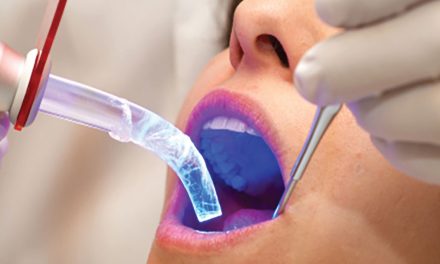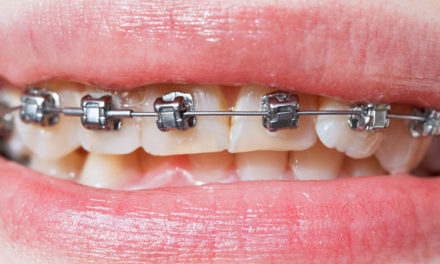Do you know that doctors once recommended smoking to their patients? Yes, it is true; from 1930 till 1950, doctors were the most prominent smoking advocates, advising their patients’ cigarettes to remain active and fresh throughout the day.
Lung cancer was on the rise, yet there was not enough evidence linking smoking to it. Cigarette companies convinced doctors that throat irritation associated with smoking was due to environmental pollution and a lack of menthol, not the smoking itself.
It was not until the late 1950s that doctors realised smoking was harmful and publicly declared it a direct cause of lung cancer in 1957.
With the advent of fast-paced research in the 21st century, doctors are determined not to repeat this mistake with vaping. Yes, vaping is the new “smoking,” the fun-flavoured e-cigarette you might have seen your friends use, most of whom say it is not harmful, even advocating it as a healthier alternative to smoking.
As a dentist, we must be equipped with the correct knowledge about this new prevalent habit, its effects on oral health and be ready to help our patients with the right approach.
What is Vaping?
Vaping, a short form of Vaporizing, is inhaling and exhaling the aerosol produced by an electronic cigarette, commonly known as a vape pen. This vape pen contains a liquid known as vaping juice, available in various attractive flavours and contains many chemicals, including nicotine. This liquid vape juice is heated, turned into vapours (hence the name), and inhaled by users.
According to research, vaping has skyrocketed to more than 1500% increase in users between 2019 and 2021. The latest numbers are even more alarming; according to an early 2023 survey, more than 3.5 million Australians use vape or smoke, with the majority being teenagers.
Why do people vape?
Like cigarettes, manufacturers have advertised vaping as the symbol of youth and being in vogue, attracting many teenagers to use it out of curiosity and try the many attractive flavours.
Teenagers are also pulled into the vaping habit by peer pressure. It is cheaper than regular cigarettes and readily available at stores. Moreover, it is easier to hide from parents, available in small shapes and sizes, no more than a USB flash drive.
Is not vaping better than smoking?
Numerous people who smoke regularly switch to vaping as their first attempt to quit, claiming it is better than smoking. They cite early research suggesting that vaping exposes fewer toxins, not producing tar and carbon monoxide like smoking.
However, vaping is not without its associated risks; it contains nicotine (responsible for addiction), inhibits brain development in teenagers and causes smoking-like respiratory problems, i.e. asthma and bronchitis.
No one ever thought that smoking could be fatal until the 2019 outbreak of E-cigarette associated lung injuries that hospitalised more than 2800 individuals, resulting in the death of 64 individuals. This incident raised grave concerns about the safety of using e-cigarettes.
For smokers considering vaping to quit smoking, there are other practical and proven ways to overcome this habit, like counselling and medication. Talking to a health professional about it is the best way to make an informed decision.
Know that vape is not a smoking cessation product, and as we will discuss below, it is just as detrimental to our oral health as it is to our physical health.
Effects of Vaping on Oral Health?
The effects of smoking and vaping on the lungs and other body systems are widely discussed, but the impact on oral health is often overlooked. Our duty as oral health professionals is to be well informed on the effects of vaping on oral health as an emerging healthcare problem.
Like cigarette smoking, vaping can cause gum irritation, leading to bleeding and, finally development of periodontal disease. Weak periodontal tissues lead to gum recession, eventually resulting in the loss of mobile teeth. You then need a prosthesis like a dental implant to replace the lost tooth, but does vaping spare even that?
Well, studies show that vaping decreases implant success by constricting blood arteries that cause poor perfusion and delayed healing of the implant surgical site.
Even if healing occurs, vape users are more prone to peri-implantitis (inflammation around the implants). A study found vaping to be the primary causal factor of peri-implantitis by inducing inflammatory reactions in oral epithelial cells and periodontal fibroblasts.
Clinically vape users showed the poorest prognosis when treated for peri-implantitis, followed by smokers and non-smokers (who showed the best prognosis).
All these periodontal issues are linked to nicotine, the equally main culprit in cigarette smoking. A famous vape manufacturer claims it is as efficient in delivering nicotine as a cigarette, just 2.7% faster. However, many manufacturers under-label the nicotine content in their e-cigarettes.
Vape users are at a higher risk of developing caries. According to a survey, vape users are 79% more prone to develop caries, linked to 2 reasons: Xerostomia & Harmful Ingredients that promote the carious process.
Vape users have reported symptoms of dry mouth (xerostomia) linked to 1)the heat produced by the vape and 2)a volatile ingredient: isopropyl alcohol. Isopropyl alcohol reduces the secretion of saliva and acts as a diuretic, resulting in dehydration and, eventually, dry mouth. This mechanism inhibits saliva’s natural flushing action, allowing more carious organisms to thrive and cause cavitation.
Apart from nicotine, vape juice has another harmful ingredient: sticky MCT oil, enabling more microorganisms and sugars to adhere to the tooth surfaces, releasing acids and causing demineralisation. Additionally, some vape juice flavours can cause more biofilm (plaque) formation, aiding adherence of sugars and carious microorganisms.
Vapes are electronic devices powered by lithium batteries to heat the vape liquid. These batteries can get overheated and result in an explosion, causing burns and terrible injuries. According to US FDA, there were over 2000 Emergency room visits for a vape explosion from 2015 to 2017. These injuries significantly affect nicotine users due to impaired immunity, constricted perfusion, and reduced connective tissue turnover.
How to prevent the adverse effects of Vaping?
As mentioned previously, vape users are at a higher risk of developing caries and periodontal disease. They need to be extra careful about their oral health. Maintaining oral hygiene is important:
Brushing twice daily, once before bed and once after breakfast, with a fluoride-containing toothpaste
Use of floss in the interdental spaces to prevent food lodgement and restrict the carious process
Regularly visiting the dentist, so they can detect any early signs of oral disease, treating it in its early stages.
Switch to nicotine-free vape juice alternatives and gradually reduce its usage.
How can we help vape users as Dental professionals?
Dentists have a crucial role in educating patients about vaping in a helpful, friendly manner.
Most vape users are teenagers and should be approached conversationally, like asking them if they know someone who vapes, what they think about vaping, and if they know about the effects of vaping on health. This approach will help build trust with the patient and then gradually explain specific oral health risks to them.
Adult vape users, especially those trying to quit smoking, are more receptive to advice. They should be informed of smoking cessation options, such as chewing gums and medications, that are nicotine free and more suitable for smoking cessation.
The most crucial task for the clinician is to screen for any developing diseases in vape users and use any preventive measures like fluoride sealants and restoration of early carious lesions to stop the disease from developing in the first place. Particular attention should be given to periodontal tissues.
More research is yet needed to understand the effects of vaping on oral health. Dentists can access more data than any researcher; they should document and report oral healthcare findings to better understand potential risks.
Conclusion
In conclusion, even though vaping may be considered a “safer” alternative to smoking, it poses potential risks to your dental health. Dentists are essential in helping people make educated decisions regarding their vaping habits by being aware of the potential impacts and adopting preventative measures to protect their oral health.
References
Kim, S.A., Smith S., Beauchamp, C., Song, Y., Chiang, M. Giuseppetti, A.… Kim, J.J. (2018). Effects of E-cigarette liquids on oral microbiome and enamel properties. Journal of Dental Hygiene, 92(6), 10-18.
Farsalinos, K. E., & Polosa, R. (2014). Safety evaluation and risk assessment of electronic cigarettes as tobacco cigarette substitutes: a systematic review. Therapeutic Advances in Drug Safety, 5(2), 67-86.
Australian Institute of Health and Welfare. (2022). National Drug Strategy Household Survey 2021: Detailed findings. Drug statistics series no. 37. Cat. No. PHE 310. Canberra: AIHW.
AlJasser, R., Zahid, M., AlSarhan, M., AlOtaibi, D., & AlOraini, S. (2021). The effect of conventional versus electronic cigarette use on treatment outcomes of peri-implant disease. BMC Oral Health, 21. https://doi.org/10.1186/s12903-021-01784-w












